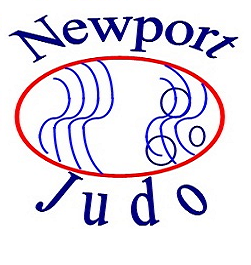Exploring Judo Renzoku Kaeshi Gokyo for Progressive Training
Judo has always emphasised the balance between attack, counterattack, and continuous movement. When studying the Gokyo no Waza, students often focus on isolated throws. Yet, there is immense value in seeing these throws as connected movements rather than as stand-alone techniques.
 |
| Stand Tall: Respect and Affect For More Information OR Book A Class |
The Core Concept
This approach, which integrates Judo Renzoku Kaeshi Gokyo, explores how throws can function as both combinations and counters. Students gain a deeper sense of timing, reaction, and adaptability by progressing through the five kyō with this lens.
Using A Throw Against Itself
It is widely recognised in Judo that many throws can be used against themselves.
For example, De-ashi-barai (often called De-ashi-hari) may be applied as a direct counter to an opponent’s De-ashi-barai. Likewise, O-soto-gari can be countered with another O-soto-gari, provided the defender times their entry correctly. This principle highlights the reactive nature of Judo and reveals mirror-like counters in live practice.
Why Linking Throws Strengthens Learning
Traditional study of the Gokyo often separates each throw for technical mastery. However, judoka quickly discover that many techniques flow into one another naturally.
For example, De-ashi-barai sets the stage for Hiza-guruma; if the first attack fails, the second may succeed. Likewise, O-soto-gari can transition seamlessly into O-goshi depending on the opponent’s resistance. By explicitly teaching these links, students sharpen their awareness and perceive shifting opportunities in live practice. This technique does not work for every throw in every kyo, but it does for most. Students and coaches should be willing to experiment.
The Dual Role: Combination And Counter
The concept becomes more powerful when students recognise that the next throw can act as either a renzoku-waza or a kaeshi-waza.
Consider Hiza-guruma applied after De-ashi-barai; this may appear as a continuation if the opponent resists forward. However, if the opponent attacks first with De-ashi-barai, Hiza-guruma also serves as a counter. This dual nature builds flexibility and helps practitioners anticipate both attack and defence within one framework.
A Progressive Multi-Week Approach
To put the method into practice, a structured plan proves invaluable for instructors and students alike.
Training each kyō in progressive blocks allows the coach to highlight specific throw pairs and teaching points. Constraints during randori reinforce application under pressure and accelerate learning of practical transitions. The sequence begins with the first kyō, broken into smaller clusters, and gradually moves toward sutemi-waza.
Sample chart demonstrating the concept
| Starting Throw | Follow-Up Throw | Function | Training Focus |
|---|---|---|---|
| De-ashi-barai | Hiza-guruma | Combination / Counter | Early foot sweeps, timing of reactions |
| Hiza-guruma | Sasae-tsurikomi-ashi | Combination / Counter | Balance breaking with leg redirection |
| O-soto-gari | O-goshi | Combination / Counter | Transition from leg to hip engagement |
| Tomoe-nage | Kata-guruma | Combination / Counter | Sacrifice throw into the shoulder wheel |
| Harai-goshi | Uchi-mata | Combination / Counter | Switching between major hip techniques |
Benefits of the method
Adopting a Judo RenzokuKaeshi Gokyo approach gives several clear benefits.
- Enhanced adaptability: Students anticipate resistance and redirect energy effectively.
- Deeper understanding: Throws are studied in context, not in isolation.
- Improved randori skills: Constraints encourage experimentation with live counters and combinations.
- Progressive structure: Students see their skills grow through each kyō systematically.
Applying the method in dojo practice
Instructors may adapt the structure to their dojo environment and term length.
A six-block or ten-block curriculum can be chosen depending on available weeks and student skill levels.
Adding randori rules, such as “only use sacrifice throws this round,” helps reinforce lessons under pressure.
Students gain confidence when drills evolve into live practice with controlled limits and clear goals.
References and further reading
For additional insights on Judo training methods, consider resources from reputable sources like the Kodokan.
See the Kodokan Judo Institute for historical material and modern applications: Kodokan Judo Institute.
Book A Class
 Random thought on Life, Judo Olympics, Judo Self Defense, The Art or Judo Kata, Judo An International Sport. Things that inspire or annoy me or things that I just had to write down.
Random thought on Life, Judo Olympics, Judo Self Defense, The Art or Judo Kata, Judo An International Sport. Things that inspire or annoy me or things that I just had to write down.

No comments:
Post a Comment